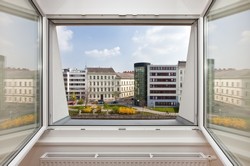Designing secure cities
The worldwide trend of growing urbanisation also means increased risk of security threats. Urban planners would benefit from design tools that take such threats into consideration. The EU-funded VITRUV (Vulnerability identification tools for resilience enhancements of urban environments) project planned to develop the necessary software tools. The intent was to help planners make various informed assessments of security issues, and thereby design accordingly. VITRUV delivered the planned set of tools, and users from four European cities gave the software a thorough testing. The software consists of three main modules, each providing a different level of advice for planners. A Strategic Concept Urban Planning Tool (STCUP) allows systematic integration of security into the conceptual stages. STCUP in turn consists of a complementary spreadsheet-based decision-support tool, SecuRbAn, allowing quick risk assessments during planning. The tool's development drew from a terrorist event database. SecuRbAn posed up to 76 questions to designers concerning the local occurrence patterns of 13 types of crime. Answers to the questions gave an overall security score for a given area. Researchers obtained the indicators from a literature review. The decision tool also incorporates a knowledge base, called Urban Securepedia, which offers more comprehensive analysis based on risk models developed by the project. The modelled contingencies include explosive threats, injury, blast load and progressive collapse. Additionally, the software incorporates modules addressing biological and chemical threats, plus systems for analysing vulnerability, traffic networks, and the costs and benefits of design choices. Investigators also linked all three software modules via a 3D graphical user interface, including visualisation and mapping tools. The group conducted over 100 dissemination activities, including conference presentations and formal publications. VITRUV made planning tools available to urban designers that estimate various security risks. Hence, cities of the future may be less vulnerable to terrorist attacks.







